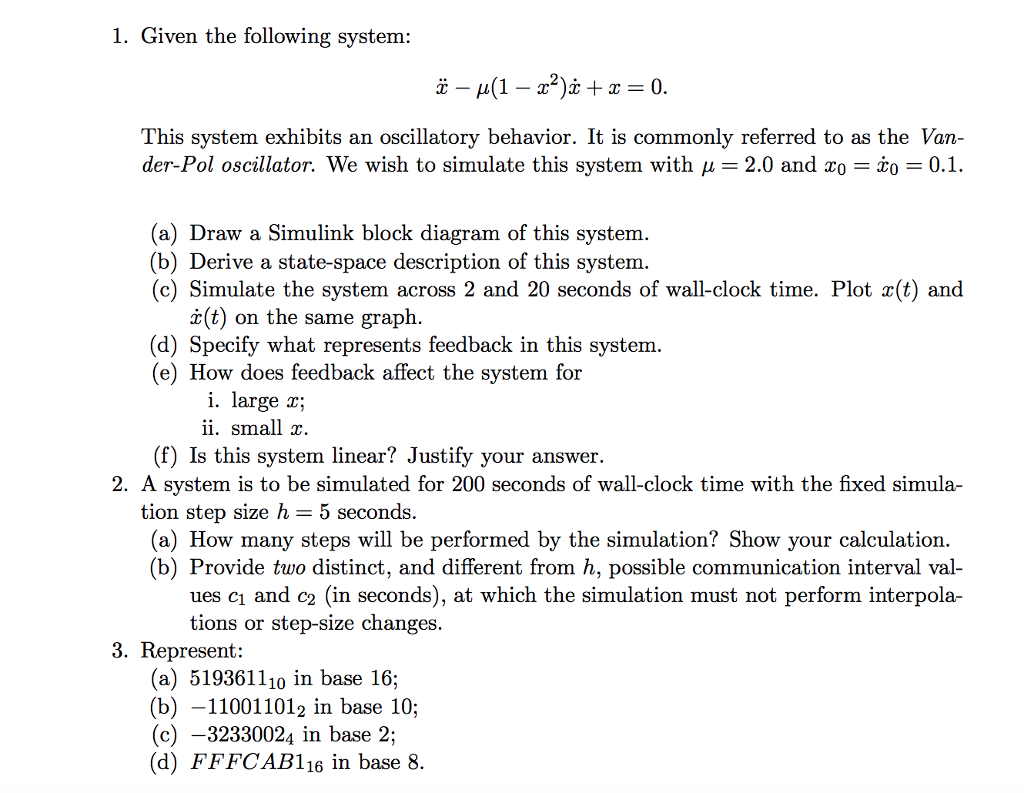Question
Given the following system: x (1 x 2 ) x + x = 0. This system exhibits an oscillatory behavior. It is commonly referred to
Given the following system: x (1 x 2 ) x + x = 0. This system exhibits an oscillatory behavior. It is commonly referred to as the Vander-Pol oscillator. We wish to simulate this system with = 2.0 and x0 = x0 = 0.1. (a) Draw a Simulink block diagram of this system. (b) Derive a state-space description of this system. (c) Simulate the system across 2 and 20 seconds of wall-clock time. Plot x(t) and x(t) on the same graph. (d) Specify what represents feedback in this system. (e) How does feedback affect the system for i. large x; ii. small x. (f) Is this system linear? Justify your answer. 2. A system is to be simulated for 200 seconds of wall-clock time with the fixed simulation step size h = 5 seconds. (a) How many steps will be performed by the simulation? Show your calculation. (b) Provide two distinct, and different from h, possible communication interval values c1 and c2 (in seconds), at which the simulation must not perform interpolations or step-size changes. 3. Represent: (a) 519361110 in base 16; (b) 110011012 in base 10; (c) 32330024 in base 2; (d) F F F CAB116 in base 8.

Step by Step Solution
There are 3 Steps involved in it
Step: 1

Get Instant Access to Expert-Tailored Solutions
See step-by-step solutions with expert insights and AI powered tools for academic success
Step: 2

Step: 3

Ace Your Homework with AI
Get the answers you need in no time with our AI-driven, step-by-step assistance
Get Started


